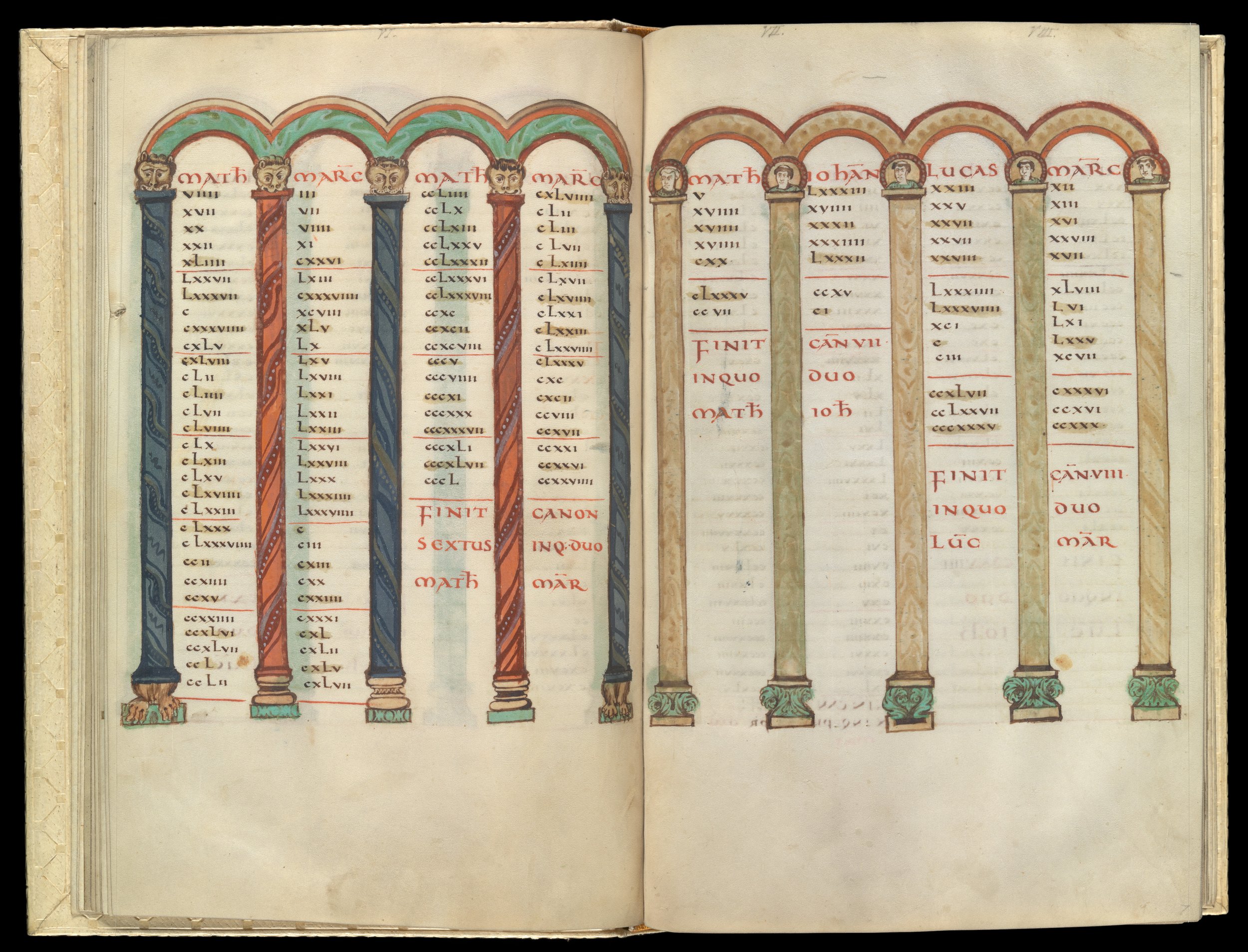By naming Eusebius as an “evangelist,” however, Coogan asks scholars to take a further step and acknowledge that writing and reading are always already pre-determined by prior commitments and categories.
Read MoreEusebius, the Evangelist, and the Rabbinic Mapping of Knowledge
These paratextual tools, he shows, enabled the many excerpting, reorganizing, and compiling projects of late antiquity, the very literary features, in fact, that earned the period the reputation of intellectual decline in modern assessments.
Read MoreEchoes of Eusebius in Syriac
With Eusebius the Evangelist, Professor Jeremiah Coogan offers a vivid and illuminating portrayal of the Eusebian apparatus and its manifold afterlives.
Read MoreFive Initial Thoughts on Eusebius the Evangelist
While not based on a close study of a select group of manuscripts, Eusebius the Evangelist often centers the materiality of the text in its analysis, and encourages the reader to experiment with the Canons—easier said than done, of course, if one doesn’t have an ancient manuscript in one’s hands, but it’s possible to do makeshift experiments nonetheless.
Read MoreEusebius the Evangelist: Introduction
To the end of highlighting the far-reaching significance of the book, we have gathered a group of scholars who, while all working on late antiquity, specialize in a diversity of materials and languages.
Read MoreRabbis and the Reproduction of Species
Rafael Rachel Neis, Figures of Speech, pen and ink on paper, 11 in. x 17 in., 2020
Rafael Rachel Neis, Figures of Speech, pen and ink on paper, 11 in. x 17 in., 2020
“If we abide by these insights in our encounter with ancient sources, we find a (surprisingly?) queer world in which a human gives birth to a raven, a cow delivers a camel, mud generates mice, and fire begets the salamander.”
Read More"They Shall Teach Your Statues to Jacob": Priests, Scribes, and Sages in Second Temple Times
Dr. Steven D. Fraade wrote this article while on sabbatical in 1988. It was accepted for publication soon after, but the journal wanted substantial cuts due to the space constraints at the time. AJR is pleased to give this article a permanent home and hope it will inspire future work on this important subject.
Read MoreHow the Rabbis Taught the Jews (Not) to Read the Bible
Rebecca Sharbach Wollenberg introduces her new monograph, The Closed Book (Princeton, 2023).
Read MoreSBL 2022 Review Panel: Hell Hath No Fury
AJR is pleased to publish remarks delivered as part of a book review panel at the annual meeting of the 2022 Society of Biblical Literature in Denver. The panel was organized by members of the Disability and Healthcare in the Bible and the Ancient World steering committee.
Read MoreAJR Conversations | Hell Hath No Fury
As early Christian authors continued to build upon and intensify Roman carceral spaces they imagined a system of divine justice in which ever increasing forms of violence are sanctioned by God to elicit proper behavior.
Read MoreHell Hath No Fury: A Response
It goes without saying that I could talk for hours about any one of the questions that has been posed in this forum, but I will just share a few initial thoughts in response to each of the panelists.
Read MoreHell Bound Bodies No More: Unhoused, Disabled, and Incarcerated Bodies in the Ancient Imagination
In her work Henning proves herself to be the first real textual archaeologist of hell: she plumbs depths and asks questions that, with few exceptions, previous scholars did not.
Read MoreA Queer Tour of Hell
One of the many strengths of Henning’s book is the multiple references to contemporary practices and conversations, which highlight the importance of engaging the ancient and medieval tours of hell.
Read MoreWhere, the Hell?
For my part, I want to examine some of the evidence for the material realities of punishment in the Roman world, exploring a few spaces that bring archaeological and affective texture to the penal and carceral language informing tours of hell to which that Henning so insightfully points in her book.
Read MoreHell and the Human
What we find when we do so—with Henning as a surefooted guide through these hellscapes—is a stunningly vivid and visceral picture of how the Christian anthropological imagination actually worked during the formative centuries of the movement and extending into late antiquity.
Read MoreHell Hath No Fury: Gender, Disability, and the Invention of Damned Bodies in Early Christian Literature
Building upon scholarship that sees juridical contexts at the heart of these conceptions of punishment and just desserts, Henning pushes such conclusions further by asking what other assumptions, namely concerning bodies and gender, are brought into our scholarly interpretations of Hell and the afterlife.
Read MoreAugustine’s Latin Christian Synthesis
Augustine drew on the central Christian idea of sacramentum—a technical but expansive concept indicating the mysterious conjoining of the sensible to the intelligible, the human to the divine—to produce a unified theory of existence that stands in contrast to the dualisms of his time.
Read MoreResponse to the Forum on Unfamiliar Selves in the Hebrew Bible
Unfamiliar Selves invites biblical studies to engage in broader discussions in the study of religion through comparison of our primary texts with ethnographic work on spirit possession practices across the world today.
Read MoreJewish Spirits and Christian Specters
“Christianity is a subtler, quieter apparition in this book than it is in much past scholarship on the topic—but it lurks nevertheless, going bump in the night and thereby shaping the discussion in implicit ways.”
Read MoreSelves, Spirits, and the Usefulness of Comparison
Merely establishing the existence of “spirit” language in ancient Jewish texts, rather than identifying its particularity–the local realities with which it intersects and the specificity of the literary representations by which it is constituted–risks evaluating ancient Judaism from the standpoint of Christianity.
Read More


















